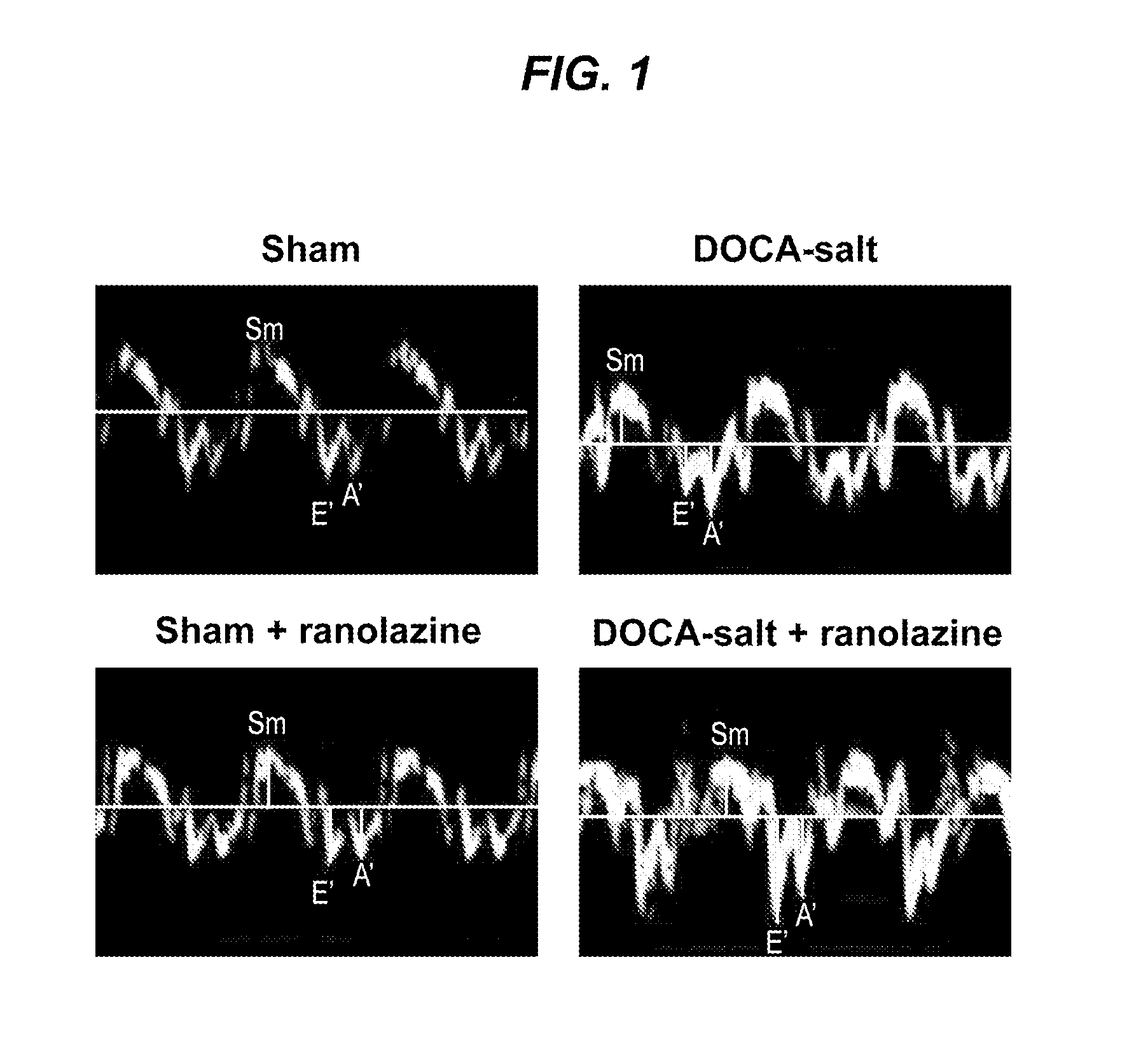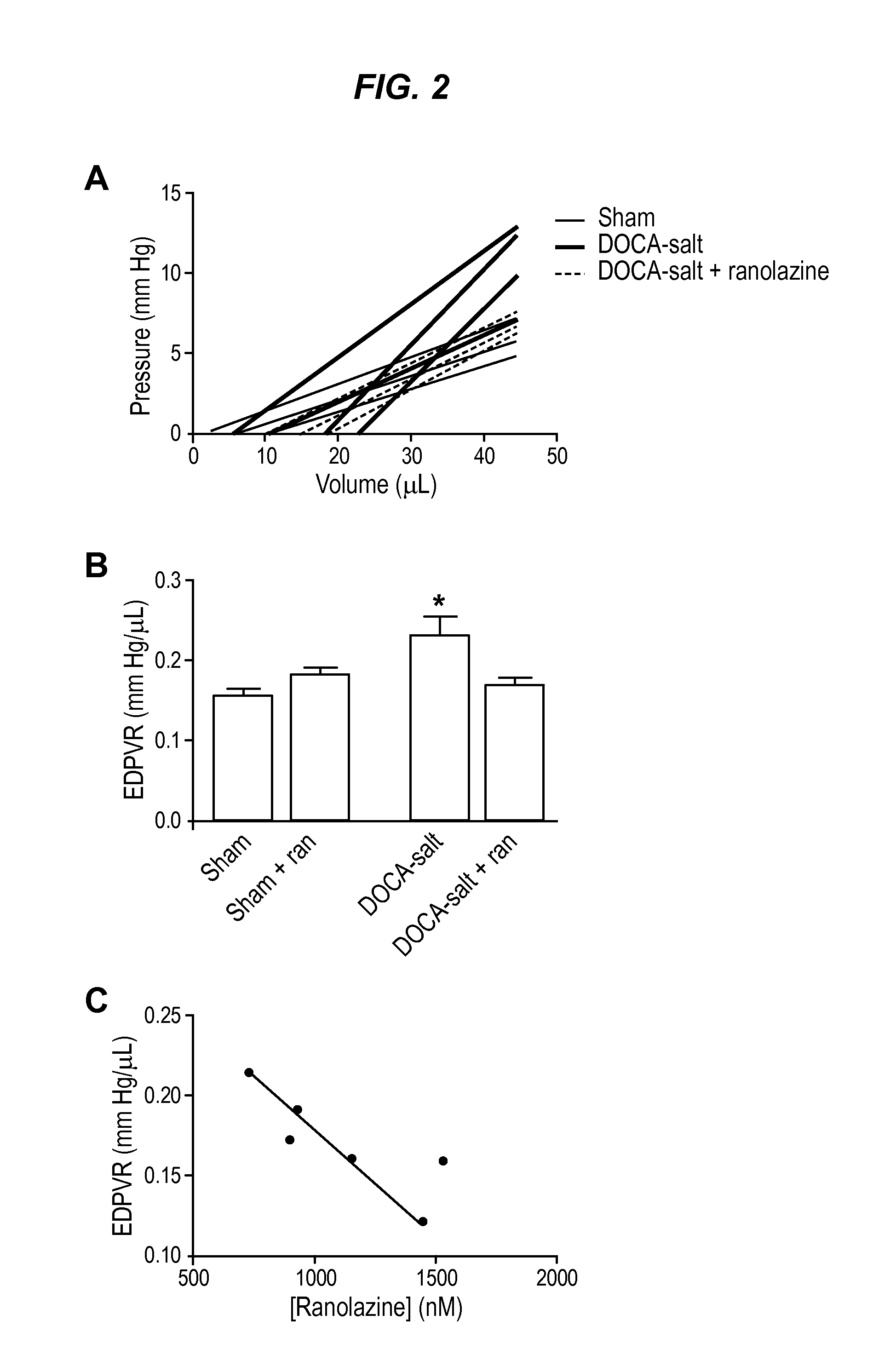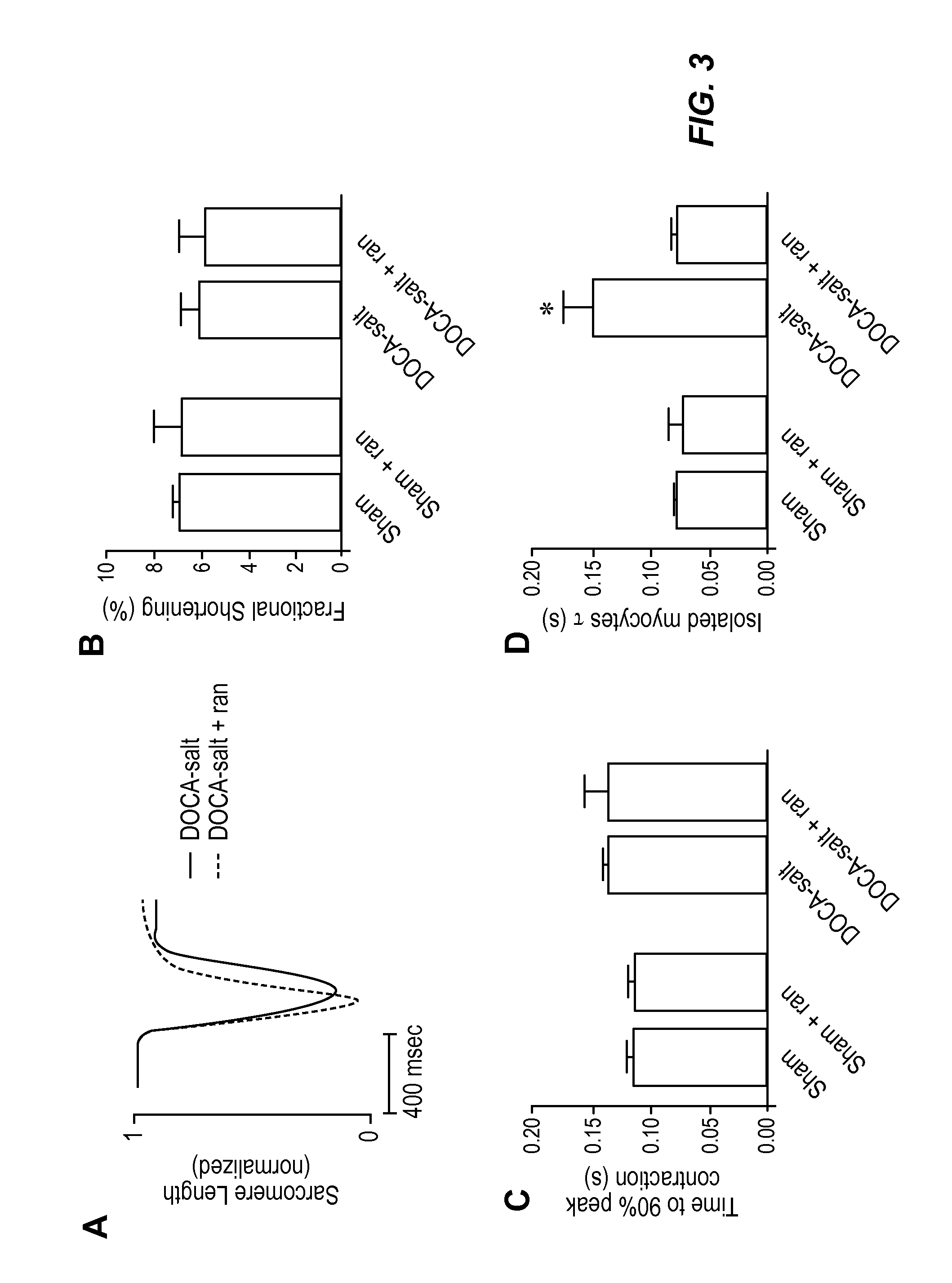Methods of treating diastolic dysfunction and related conditions
a diastolic dysfunction and related condition technology, applied in the field of diastolic dysfunction and related conditions, can solve the problems of slowed ventricular relaxation and diastolic dysfunction, no studies to date have demonstrated the existence of diastolic dysfunction in which the sensitivity of myo filament calcium is increased, etc., to achieve the effect of increasing
- Summary
- Abstract
- Description
- Claims
- Application Information
AI Technical Summary
Problems solved by technology
Method used
Image
Examples
example 1
[0203]The following methods were executed during the studies described below:
[0204]Generation of DOCA-salt mouse model: Previously, it was shown that this model leads to mild hypertension, myocardial oxidative stress, and diastolic dysfunction.20 A gradual and mild elevation in blood pressure was induced by unilateral nephrectomy, subcutaneous implantation of a controlled release deoxycorticosterone acetate (DOCA) pellet (0.7 mg / d; Innovative Research of America, Sarasota, Fla.), and substituting drinking water with 1.05% saline. Control animals underwent a sham operation, had placebo pellet implantation, and received water without salt.
[0205]Invasive hemodynamic studies, noninvasive echocardiography, and myocyte isolation were done on postoperative day 14-18 for DOCA-salt and control mice. All experiments were approved by the University of Illinois at Chicago Animal Care and Use Committee.
[0206]Noninvasive assessment of diastolic dysfunction: Mice were anesthetized, maintained at 3...
example 2
[0214]Ranolazine attenuated diastolic dysfunction in vivo. As previously described, DOCA-salt mice had evidence of diastolic dysfunction with preserved systolic function by transthoracic echocardiography at postoperative days 14-18 (Table 1).20 Intraperitoneal injection of ranolazine improved diastolic dysfunction without affecting systolic function. DOCA-salt mice had significant reductions in tissue mitral annulus early longitudinal (E′) velocities and the ratio of early annulus to late annulus (E′ / A′) velocities, which improved to sham levels with ranolazine treatment (FIG. 1). The ratio of early diastolic filling velocity to the early diastolic mitral annulus velocity (E / E′) has been reported to have the highest correlation with invasive hemodynamic measures of diastolic dysfunction. 20, 25 Hypertensive mice had a higher E / E′ compared to controls, and ranolazine returned this ratio toward normal in hypertensive mice. The mitral inflow velocities, E and A, were similar among the ...
example 3
[0216]Ranolazine improved relaxation in DOCA-salt cardiomyocytes. Silberman et al. showed that impaired relaxation of cardiomyocytes was the main contributor to diastolic dysfunction in the DOCA-salt hypertensive model, finding no increase in cardiac fibrosis or inflammation.20 To confirm that ranolazine was working directly on DOCA-salt cardiomyocytes to improve relaxation, freshly isolated ventricular cardiomyocytes were studied. DOCA-salt cardiomyocytes had preserved contractile function, as previously reported (FIGS. 3A, 3B, and 3C).20 Additionally, treatment with ranolazine did not affect contraction in sham and DOCA-salt mice (FIGS. 3A, 3B, and 3C). In contrast, relaxation τ was significantly impaired in DOCA-salt mice and improved to normal levels with ranolazine treatment (DOCA-salt 0.15±0.03, DOCA-salt+ranolazine 0.08±0.01, sham 0.08±0.01, sham+ranolazine 0.07±0.01 seconds, p<0.0001; FIGS. 3A and 3D).
PUM
| Property | Measurement | Unit |
|---|---|---|
| time | aaaaa | aaaaa |
| time | aaaaa | aaaaa |
| time | aaaaa | aaaaa |
Abstract
Description
Claims
Application Information
 Login to View More
Login to View More - R&D
- Intellectual Property
- Life Sciences
- Materials
- Tech Scout
- Unparalleled Data Quality
- Higher Quality Content
- 60% Fewer Hallucinations
Browse by: Latest US Patents, China's latest patents, Technical Efficacy Thesaurus, Application Domain, Technology Topic, Popular Technical Reports.
© 2025 PatSnap. All rights reserved.Legal|Privacy policy|Modern Slavery Act Transparency Statement|Sitemap|About US| Contact US: help@patsnap.com



